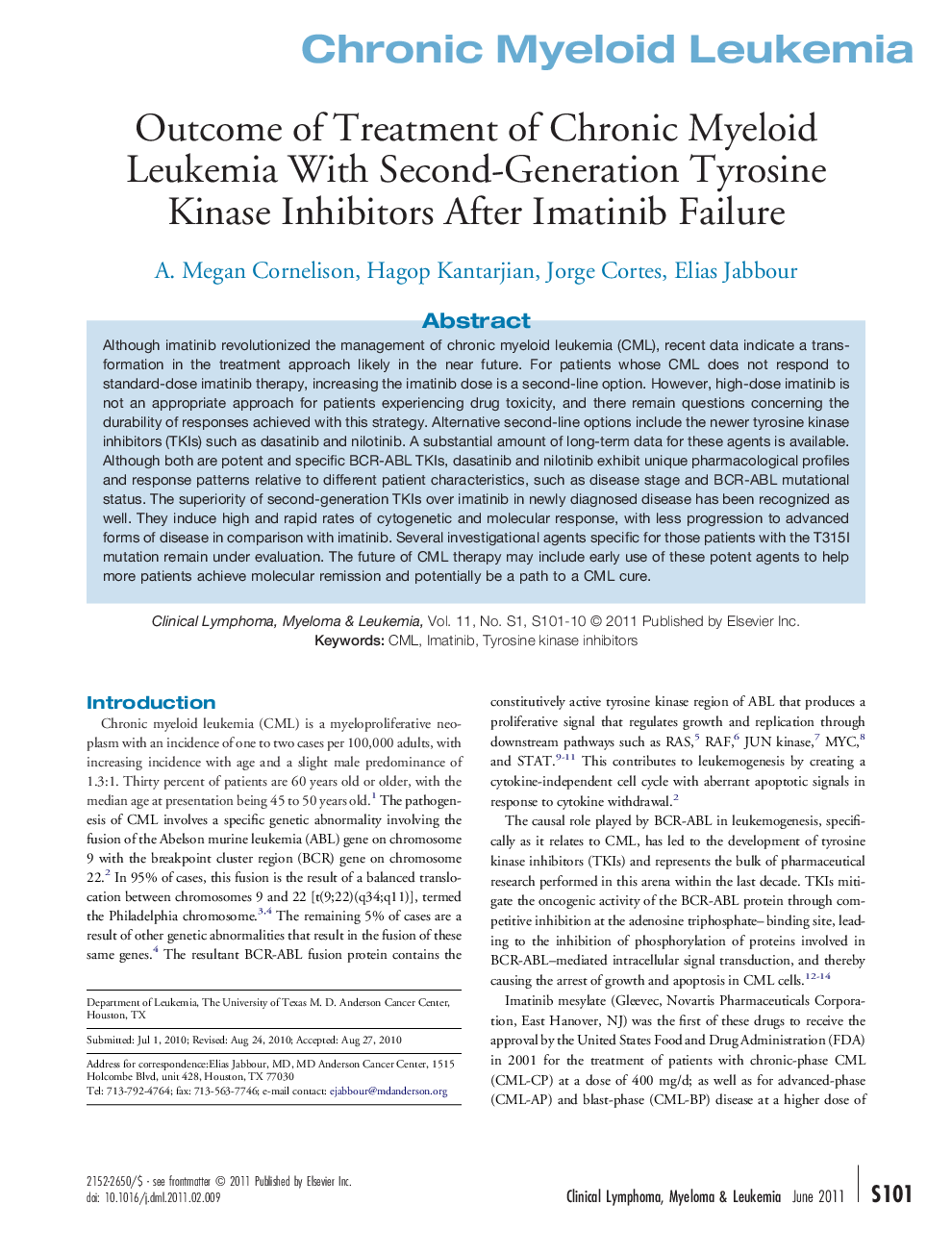| Article ID | Journal | Published Year | Pages | File Type |
|---|---|---|---|---|
| 2755169 | Clinical Lymphoma Myeloma and Leukemia | 2011 | 10 Pages |
Although imatinib revolutionized the management of chronic myeloid leukemia (CML), recent data indicate a transformation in the treatment approach likely in the near future. For patients whose CML does not respond to standard-dose imatinib therapy, increasing the imatinib dose is a second-line option. However, high-dose imatinib is not an appropriate approach for patients experiencing drug toxicity, and there remain questions concerning the durability of responses achieved with this strategy. Alternative second-line options include the newer tyrosine kinase inhibitors (TKIs) such as dasatinib and nilotinib. A substantial amount of long-term data for these agents is available. Although both are potent and specific BCR-ABL TKIs, dasatinib and nilotinib exhibit unique pharmacological profiles and response patterns relative to different patient characteristics, such as disease stage and BCR-ABL mutational status. The superiority of second-generation TKIs over imatinib in newly diagnosed disease has been recognized as well. They induce high and rapid rates of cytogenetic and molecular response, with less progression to advanced forms of disease in comparison with imatinib. Several investigational agents specific for those patients with the T315I mutation remain under evaluation. The future of CML therapy may include early use of these potent agents to help more patients achieve molecular remission and potentially be a path to a CML cure.
